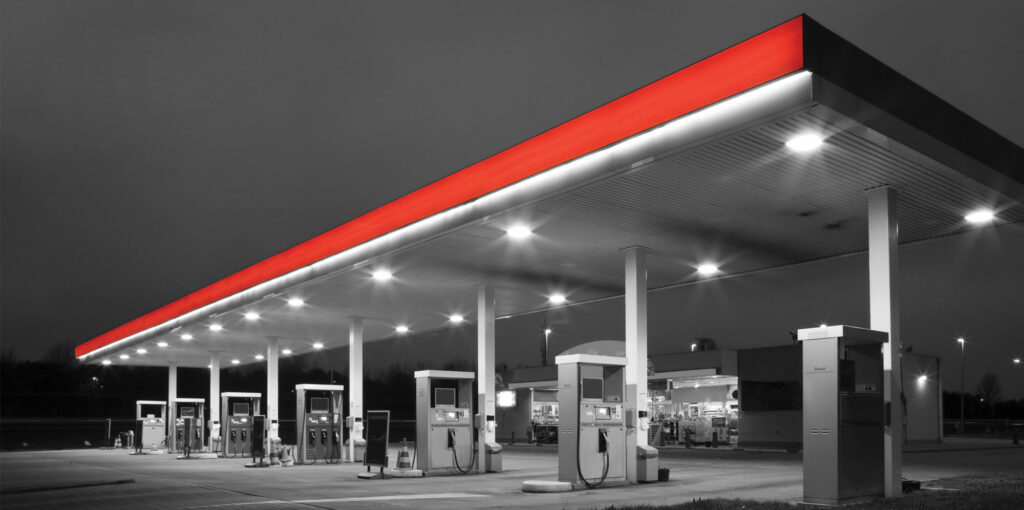The Need for a Long Term Strategy in this Pandemic
In the past few months, it has become clear that even though many areas of our nation are beginning their reopening processes, the effects of the pandemic are going to be long lasting and will be here for many months to come. It’s safe to say that by now, most if not all retailers have made a number of changes to how they operate in order to maximize safety and comply with local ordinances. Steps taken include things like plexiglass barriers, hand sanitizer stations, social distancing markers on the floor, etc. But if you haven’t begun this process already, now is the time to move beyond reactionary steps and actually build a forward-looking strategy for meeting the changes in consumer demands for safety.
In March of this year, in the middle of the pandemic no less, ROC is proud to have opened the first cashier-less, fully autonomous convenience store in southern California. The work that went into researching and selecting the technologies involved in standing this store up are directly applicable to retailers who want to reduce the touchpoints and friction in their stores in order to create a safer environment for both customers and staff.
Consumer Mindset
Analysis shows that e-commerce revenue is up nearly 130% year over year and consumers are showing a clear preference for purchasing products without entering a physical store. Delivery services and curbside pickup are seeing a huge increase in demand and contactless payment is being used by over half of all Americans. Customers want safer ways to shop, and the good news is that there are many existing and emerging technologies available to satisfy this demand.
Preventing the Spread
Because the virus can spread from surface contact, consumers want to know that the surfaces they touch are clean. Our research has uncovered a novel, low-cost surface coating that can be applied to an entire store in a couple hours that will protect all surfaces for up to a year. Once applied, viruses and bacteria that come in contact are physically destroyed upon contact. And while this technology is “invisible” to customers, effective marketing and store signage can be deployed to effectively build consumer confidence knowing that the surfaces they touch are free from germs.
No-Touch/Low-Touch
There are a number of existing technology providers that can enable a no-touch or low-touch commerce experience. One such option is “Scan and Go”. Using a mobile app, customers can scan their own products and pay on their smartphone. This reduces the need for additional cashiers to handle peaks in traffic and also allows customers to get in and out quickly and this also directly addresses problems that social distancing has created with customers’ perception of long lines in the store and how long it takes to shop and check out.
There are also some really good options when it comes to mobile ordering. Customers can order either merchandise or made-to-order food and then pick it up at the store. However, due to the number of competitors in this space, it is imperative to carefully review the capabilities of the platform during the selection process to make sure it can handle your strategy. Whether that includes the ability to upsell or incorporate your loyalty program or even the complexities of made-to-order food with the various sizes, toppings, and other modifiers customers expect.
There are also a variety of capabilities of mobile ordering applications to integrate with your existing point of sale and payment systems and you’ll need to consider if you want to offer customers the option of having product handed to them curbside or if you want to put in a smart locker system. There isn’t a one-size-fits all answer to these questions as they will depend on your customer base and their expectations.
When it comes to a potentially longer term strategy, there many companies offering computer vision frictionless checkout as well as food robotics that can be employed for a variety of offerings such as salad, coffee and pizza. These technologies have the ability to reduce or even eliminate the number of in-store personnel which dramatically increases customer safety by reducing the number of people inside the store.
Finally, operational concerns can also be addressed with technologies that exist today. For example, computer vision can be employed to monitor employees prior to clocking in to make sure they don’t have a fever and are properly sanitizing their hands before each shift. And camera vision can also monitor the store throughout the day to look for proper social distancing, wearing gloves, sanitizing, etc.
In Conclusion
It may feel like everything is in such flux right now as the nation and world fights this pandemic, but now is the time you should be planning and executing on a strategy to address changes in customer behavior and expectations for safety. Are you getting the most out of your existing systems? Are your systems and business processes optimized for handling the new demands of customers such as curbside pickup or delivery? Do your employees feel safe and that there are systems in place to promote safety?
Use the button below to download the full COVID-19 Strategy Report and activate your free one-hour evaluation where we can discuss your goals and the steps you can take to find and implement the right solutions for your business.

